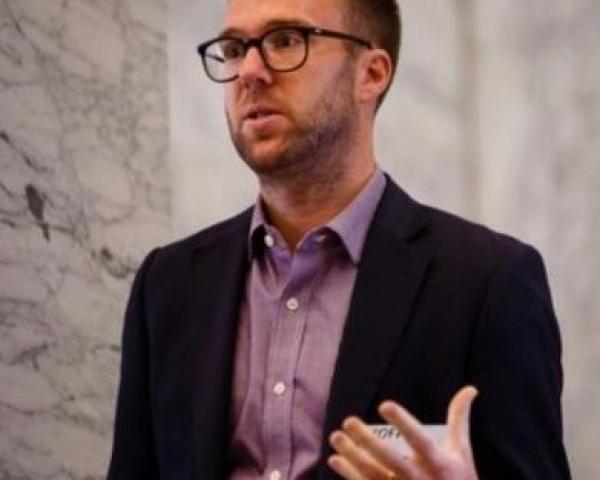Personalization is a significant opportunity for life insurance carriers looking to revolutionize their relationships with customers. In this article, Montoux takes a closer look at some key themes, with examples carriers can aspire to.
Customer relationship
Customers have long been thought to begrudgingly purchase life insurance protection, either as a rite of passage or something an agent or other perceived authority has advised them to do. The nurturing of a customer relationship is not something that has been required of the carrier, as it has traditionally sat with agents working to earn their commission. This lack of an engaged relationship has led to a culture of disconnect, distrust and even resentment toward the carrier companies, and without an agent’s care can lead to lapses in premium payments and ultimately lack of coverage.
It is in customer relationship building that personalization is not merely an aspiration, but becoming a necessity. As younger generations are delaying or completely bypassing more traditional milestones of marriage, home ownership and starting families, the opportunities for agents’ messaging to resonate with them is lessening. The
average age of a life insurance agent in the U.S. is 59 years old, and, as these aging agents focus their efforts on high-value policies among their peers, traditional carriers are at risk of losing touch with the new needs and perspectives of young generations if they don’t make significant changes now.
Modern consumers -- and even more so, those of future generations -- are moving away from traditional sales models and purchasing behavior in every other industry, with insurance following in this inevitable shift. Consumers are going online to not only research and attempt to understand policies but complete applications and make payments.
Even more significantly, the internet plays a key role in educating the modern consumer on the need for life insurance in the first place, as even the traditional triggers of life insurance purchase such as home ownership and financial advisers move to the digital space. It is essential to ensure younger generations realize the value of purchasing a life insurance policy in the first place, as Denise Garth outlines in
this article.
Consumers of today are bombarded with constant opportunities to part with their money, with a 2015 study estimating the average attention span
has dropped from 12 to eight seconds since 2000, to less than that of a goldfish.
Agents will continue to have a significant role to play for the foreseeable future as the Boomer generation enjoys long lifespans, and value the human connection. Tech-savvy agents will take advantage of digital distribution channels for acquiring new customers, and continue their roles indefinitely.
But the ultimate transformation for life insurance could be turning it from a grudge purchase customers don’t perceive any immediate benefit from, to something that can improve their own lives and wellbeing in
addition to ensuring their loved ones are financially secure in the event of their own death, or they receive a substantial payout from permanent policy in later life. And this potential shift lies in the carriers’ hands.
See also: Thought Experiment on Life Insurance
Personalizing power
An example of a grudge purchase becoming one of enjoyment in a different industry is shown by
Flick Electric. Flick is an electricity company based in New Zealand that was established in 2014. It has built a steady following of loyal customers who are so enthusiastic about their relationship with the company that they often become ambassadors, referring friends and family to join.
Flick has achieved this relationship by not only bringing a different payment model, which reflects the market rate of electricity and passes these ebbs and flows onto the end customer’s bill, but has also very tactically framed their marketing and social media presence to attract the key millennial and Gen-Z markets as they become new bill payers of households - and also well-prepared for Generation Alpha and beyond.
While the purchase of electricity is obviously a more essential expense for people than life insurance, the customer relationship Flick has managed to build is a great example of what insurers can strive for in making customers perceive value in each and every premium payment they make.
Life and death should feel personal
Insurers can look to optimize their digital spending with highly targeted social media campaigns, as part of their wider marketing strategy. With social media now an integral part of
81% of U.S. Americans’ lives, insurers that work to very specifically target campaigns in response to personal milestones shared online could reap the rewards of more conversions by ensuring their marketing efforts are in exactly the right place, at the right time. Envisage the way in which a millennial couple sharing their excitement over their new firstborn child’s birth on Twitter could be automatically approached with a very specific offer of life insurance, which outlines the benefits of such a policy for the future of that baby.
Fabric demonstrates the kind of messaging that could resonate with this hypothetical pair of new parents. Fabric’s own social media content emphasizes "parenting made easy, starting with life insurance," conveying an easy, low-effort, high-reward investment, which appeals to new parents wanting to secure the financial future of their family. This kind of personal and emotional connection to a life insurance purchase is key for new generations of digital natives who are bombarded with constant offers online and limitless places to spend their money -- especially as, in this example, when starting a family. Breaking through the noise to demonstrate the immediate value of peace of mind is key for life insurers to earn that place in a young family’s budget.
Products
Life insurance products currently leave plenty of scope both for further personalization, and for wider improvements on messaging that will actually resonate with customers. Complex, wordy policies with grim mentions of “death benefits” that attempt to cover every eventuality can leave customers confused, frustrated and often either under- or over-insured.
Sherpa is an example of using a different model to ensure the cover offered to customers is extremely personalized. While traditionally insurers create products, and brokers work to find the best customers to buy these products, Sherpa charges a value-based annual fee to customers, and in turn meets all their specific insurance needs.
Distribution
It’s important that insurers work to accommodate customers by allowing them to use the communication channel they are most comfortable with, rather than trying to funnel them into the carrier’s preference. A report published by McKinsey
indicates that more than 80% of shoppers encounter a digital channel at least once during their purchasing journey. Especially on social media, replying to a customer’s inquiry through that channel with advice to call a phone number could lose an opportunity completely, whereas being able to answer questions directly and then move to another online channel such as the carrier’s website is more likely to retain interest.
Behind the scenes, carriers need to ensure their staff are provided with the tools to communicate information and monitor customer engagement across channels to ensure every interaction a customer has with an insurance company as a whole is as seamless as possible, no matter which individual staff member at the insurance company might be behind the interaction. These digital communications with customers, along with the collection and analysis of data, allow insurers to build rich profiles of customer needs and preferences - and prevent the repeated ask for basic customer information, which should be acquired once only.
Data and analytics
Analyzing existing customer data is key to understanding patterns of premium lapses, and determining ways to help prevent them from happening with future customers. Using this data to ultimately identify the earliest signs and indicators of customer payment lapses means an insurer could preempt these, and ensure that reminders and offers of solutions keep the customer meeting premium payments, and are delivered effectively. Reminding a customer of the benefits and significance of the insurance policy at key points of doubt or uncertainty over the policies’ value relative to other payment requirements in their lives is a huge advantage for insurers.
See also: This Is Not Your Father’s Life Insurance
Experience data and connected wellness
Finding ways to gain access to and use customers’ experience data is key in achieving true personalization of life insurance, with IoT and device data greatly improving the company’s data set, and ultimately benefiting individual customers with personalized messaging and rewards.
Improving the customer perception of carriers to build trust and good faith in insurance companies is crucial in obtaining this personal data, as customers will need to overcome fears of anti-selection in openly sharing, as well as their concerns around privacy. Being able to analyze this information provided by new customers can allow individual quotes to become even more accurate and eliminate the issues of non-disclosure or misinformation provided by customers -- which can ultimately lead to their policy not being paid out. This device data can also be used in a continuing basis to explore patterns of behavior, health and death to more accurately model risk.
Insurers are already beginning to use data to help nudge customer behavior - the AIA Vitality app updates the insurer on activity levels by syncing from fitness wearables and rewards customers’ health improvements with
lower premiums. According to Accenture, 77% of consumers would be willing to exchange behavior data for lower premiums, quicker claims settlements or
coverage recommendations. Interestingly, this aspect of personalization may not be just for targeting the young, as Accenture also
reports senior citizens are adopting wearable devices five times faster than the general population.


